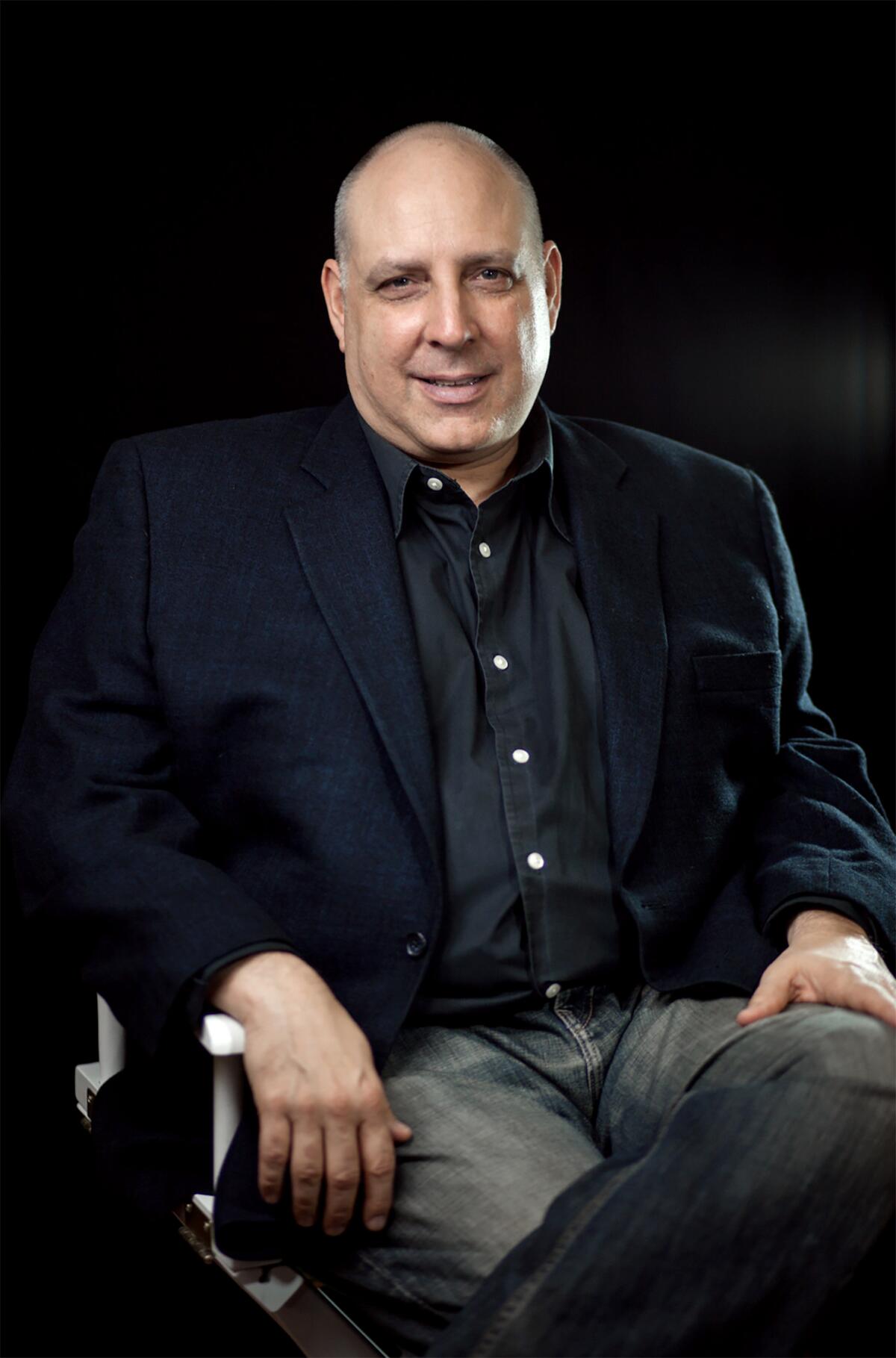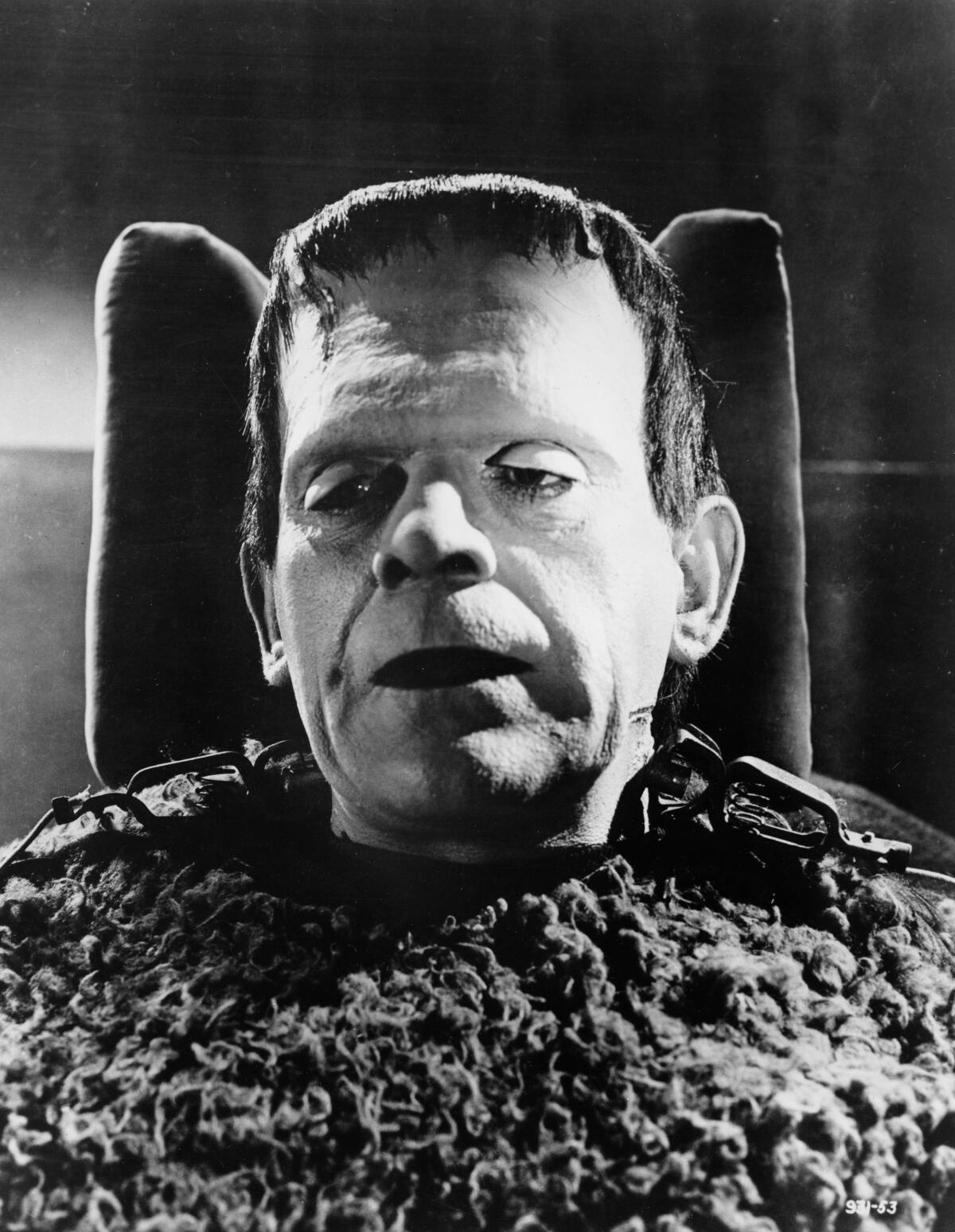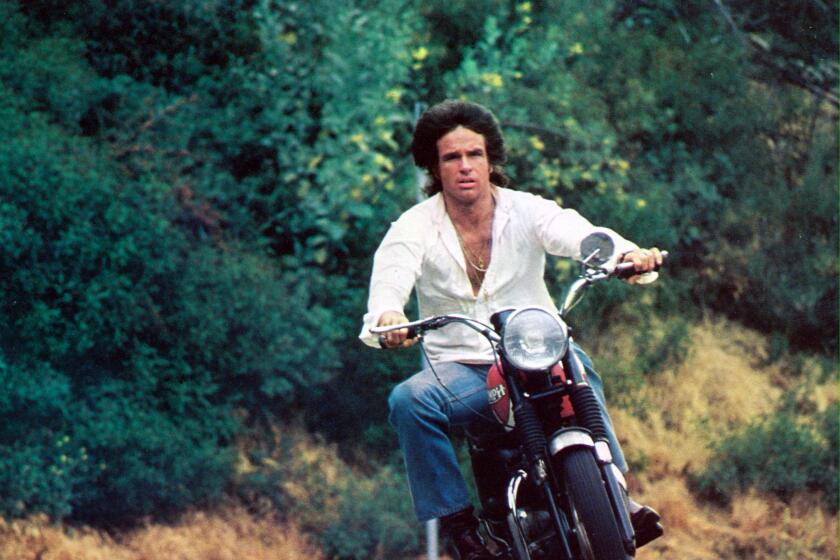How a father-son battle spawned Hollywood’s classic monsters

- Share via
On the Shelf
It's Alive!
By Julian David Stone
Greenleaf: 232 pages, $23
If you buy books linked on our site, The Times may earn a commission from Bookshop.org, whose fees support independent bookstores.
Think of the classic Universal horror movies from the 1930s and you probably picture Bela Lugosi and Boris Karloff or, as we best know them, Dracula and Frankenstein. The creatures behind a million nightmares and Halloween masks, together they launched American horror as we know it, along with nearly a century’s worth of spinoffs and sequels.
But none of this happens without the initiative of a guy you’ve likely never heard of. Someone who saw horror as the future of movies and who fought his powerful father, a lord of old Hollywood, to make that future a reality.
Junior Laemmle is the hero of “It’s Alive!,” Julian David Stone’s new madcap historical showbiz novel about the making of James Whale’s “Frankenstein” (1931). A whirlwind of ego, anxiety, comedy and familial rivalry, the book conjures a movie industry cautiously evolving from its roots in silent film and its melodramatic formulas, nudged forward by a wunderkind who foresees a monstrous future — if only his father, Carl Laemmle, will get out of the way.

Stone, 58, grew up assembling model kits of the Universal monsters, whose ranks also include the Mummy and the Bride of Frankenstein. He soon graduated to the actual movies and, eventually, their makers. Stone grew fascinated with Carl Laemmle Jr., better known as Junior, who was all but running Universal by the time he was 21 — bringing a youthful spirit to a studio and an industry still navigating the transition to talkies.
“Junior was very much a product of his time,” Stone says by phone from Studio City. “If you read interviews with him, he talks a little bit in the ’20s lingo. Sound has just come in, and everything’s changing. He definitely wanted Universal to be more representative of the time — and of the future.”
Horror filmmakers, icons and experts name the most underappreciated horror films of all time.
As a producer, Junior was responsible for greenlighting “Dracula,” which became a hit for Universal in 1931. But his father, still the studio head, thought the movie’s success was a fluke. Carl Sr. found it tacky and unnecessarily macabre, a blemish on the studio’s name. So when Junior set his sights on “Frankenstein,” which was also to star Lugosi, his dad wanted nothing to do with it. Universal at the time was cranking out westerns and other movies that appealed to older audiences. Junior fought tooth and nail to bring his new monster to the big screen.
“It’s the future,” Junior tells Hollywood gossip queen Louella Parsons in the novel. “It’s what people want to see. The motion picture has come of age, and the audience wants thrills like that. ‘Frankenstein’ will be our greatest picture yet. And you can quote me on that.”

It might seem odd to think of the original Universal monster movies as futuristic. They are, after all, 90 years old. But take another look. Many of the films — including “Frankenstein,” its superior sequel “The Bride of Frankenstein” and “The Invisible Man” — are tales of technological overreach, featuring state-of-the-art visual effects for the time. Nineteenth-century novels often were the source material, but to see them brought to life onscreen was something else entirely. And they haven’t really gone out of style: Universal’s forthcoming Epic Universe theme park in Orlando is planning a massive classic monsters attraction.
In the novel, as Junior pushes ahead with “Frankenstein,” he’s not even sure who will play his lumbering star. Lugosi, the suave, Hungarian-born actor, became a star with “Dracula”; in the process he gained some leverage and some ego. Originally tagged to play Frankenstein’s Monster, he grouses that the character doesn’t even have any lines. Lugosi is keen to play Dr. Mirakle, the mad scientist at the center of Universal’s truly bizarre “Murders in the Rue Morgue” (released in 1932).
Nick Davis grew up with the Mankiewicz legend: great Herman and perfidious Joe. His new book, “Competing With Idiots,” tells a more complicated story
As Lugosi stews and weighs his options, a workaday character actor named Boris Karloff sees the dramatic possibilities of the Monster, the pathos of a stitched-together undead man not made for this world. To Karloff, the Monster is a big, juicy role. With casting going down to the wire, even Whale, the director, plans to move forward with Lugosi. Thankfully, circumstance, wise heads and a memorable screen test intervene.
“Karloff absolutely connected to the material and did everything he could to make the most of it,” Stone says. “And he nailed it. That’s why the film is still revered to this day. There’s so much in it that’s great, but his performance is at the center of it. It would’ve been so easy to make it just this monster going around and terrorizing everyone. But he brings so much sympathy to it, and so much empathy. It’s really just wonderful.”

This isn’t the first showbiz novel for Stone. His 2013 book, “The Strange Birth, Short Life, and Sudden Death of Justice Girl,” is a loving homage to the days of live television in which a TV writer scores an unexpected hit with a female superhero show (and fights the Hollywood blacklist). Beacon Pictures optioned the novel, which Stone would like to see become a TV series.
Stone also wrote and directed the 1996 poker-night comedy “Follow the Bitch,” and it wouldn’t be difficult to imagine “It’s Alive!” making it to the screen as well. The new novel may be about the dawn of the American horror movie, but it runs on the energy of screwball comedy. Junior romps around Los Angeles trying to do good by his girlfriend, actress Sidney Fox, while staying one step ahead of his father. He hits premiere parties, takes care of business at the studio and wonders if he’ll ever get the promotion he’s been expecting. Junior may be forward-looking, but the novel contains a delightful glimmer of nostalgia for a Hollywood that no longer exists and a genre still in its infancy.
“I would never claim that Junior created the horror film, but I think there’s a pretty strong argument to be made that he’s the single person most responsible for horror becoming a genre,” Stone says. “He’s the one who makes the cornerstones of the entire Universal monster cycle. That’s the beginning.”
Three new books — “Dream State,” “Hollywood Eden” and “Rock Me on the Water,” examine savvy pop-culture myth-making by and about the Golden State.
Vognar is a freelance writer based in Houston.
More to Read
Sign up for our Book Club newsletter
Get the latest news, events and more from the Los Angeles Times Book Club, and help us get L.A. reading and talking.
You may occasionally receive promotional content from the Los Angeles Times.











